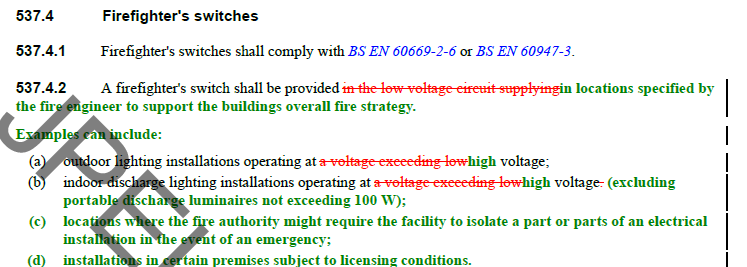
An interesting tack! I have heard musings in the fire safety sector for many years about the desire for FRS to disconnect all sorts of equipment in the event of a fire situation. Things like PV, battery and EV installations getting specific attention. I am aware of several installations where the EV supplies are disconnected via the fire alarm panel. In ROI, emergency isolation is required for PV systems such that the supply from the PV modules is interrupted as close to the units as possible, with the system interlinked with the mains so that interruption of the main supply to the building also interrupts the supply from the modules and then re-connects when mains is restored. This would allow firefighters to operate the main switch to the building and be assured that the output from the modules would also be disconnected at a point as close to them as possible. Of course, which main switch are we talking about? Many installations, particularly in the domestic side might have several.
I know that there are a number of best practice guides, some from the insurance providers who, no doubt, will continue to require installations to go above and beyond what 7671 might demand. I guess those involved in design have to keep a close eye on developments in order to avoid expensive mistakes.